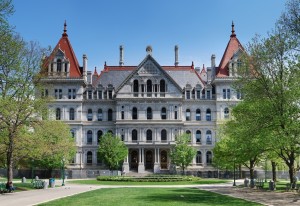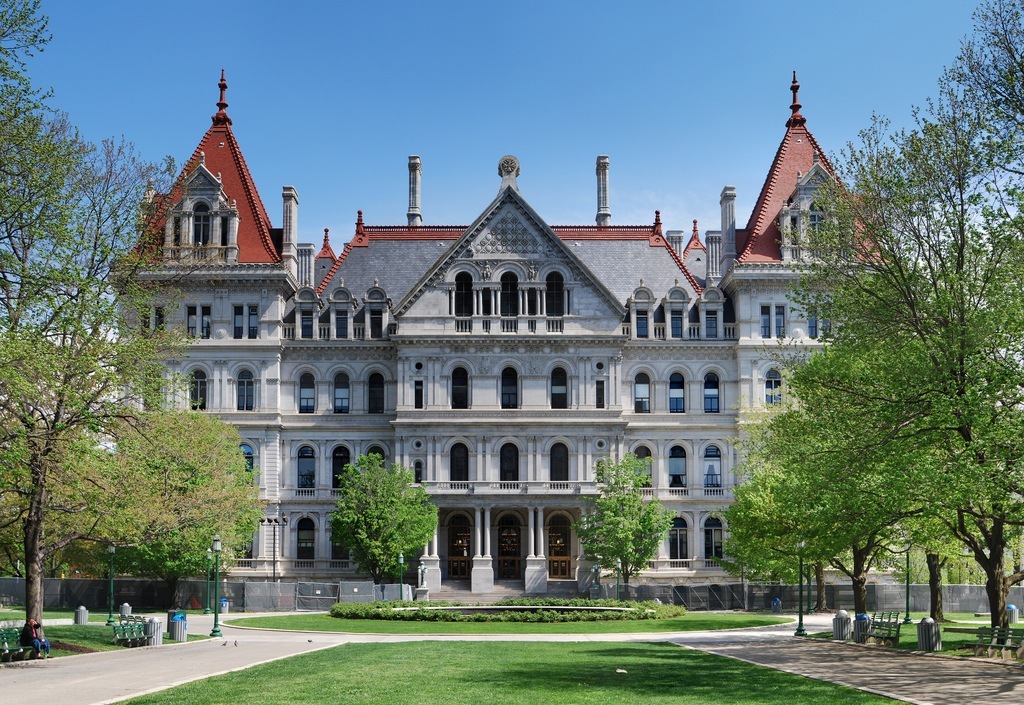 New York state 16- and 17-year-olds go to adult court, a practice nearly unique to the state. But that may change, as the New York legislature is expected to take another look at proposals to raise the age of criminal responsibility.
New York state 16- and 17-year-olds go to adult court, a practice nearly unique to the state. But that may change, as the New York legislature is expected to take another look at proposals to raise the age of criminal responsibility.
“New York State is one of two states that automatically tries 16- and 17-year-olds as adults no matter what crime they commit … That’s what we’re trying to change,” said Angelo Pinto, the Raise the Age Campaign manager at the Correctional Association of New York, a progressive nonprofit.
CA points to studies that say putting minors through some sort of youth-specific adjudication reduces the chances they will re-appear in court. By contrast, putting them in the adult system makes them more violent.
But getting a new law is “not a slam dunk by any means,” said state Assemblyman Joseph Lentol (D-Brooklyn), sponsor of two age-of-responsibility bills this year.
One came ultimately from New York Chief Judge Jonathan Lippman and the state’s Sentencing Commission. It would have left youths in the adult court system, but given under-18s a special juvenile status that comes with youth-tailored treatment and sanctions.
The other would have simply put all cases involving under-18s in Family Court.
Neither got a vote, though , slow going and several years of trying are the norm for many bills. Lentol plans to re-file his Youth Court bill. The Chief Judge’s bill will reappear as well, as may some new bills.
Pinto said CA wants to see a bill that’s broad and comprehensive, and is working on a position ahead of the next legislative session, which starts in January 2012.
But Lentol expects opposition on at least two fronts. First, he predicted some groups, maybe criminal justice organizations, might argue 16- and 17-year-olds belong where they are, in adult court.
“There are children going around committing crimes, let the truth be told,” said Lentol, “and so there are those who think that the best way to handle it is to handle it through the criminal justice system and not the juvenile justice system.”
But he rejects that argument, saying youths do things that they may not do if they are older, and may not deserve an adult felony conviction on their record.
Second, juvenile services are more intensive than adult courts, and even if they pay off in the long run, there’s still the question of who would have to pay for new youth services now. New York’s counties are afraid it could be them.
“On the merits of the issue, we would concur,” said Stephen Acquario, executive director of the New York Association of Counties. The present policy of incarceration rather than rehabilitation makes little sense, he said, but “we have very serious concerns about implementation of this change in public policy.”
The counties of New York, especially the rural counties, he said, are worried about an unfunded mandate: orders from the state to provide more services, but no more money to do it.
Though they would pay for fewer adult services, the cost of juvenile services for counties would increase. And the higher price tag wouldn’t be just for the capital cost of courts, but for social services, housing, probation, the sheriff’s resources, public defenders and mental health care.
“It’s hard to quantify it, it is in the tens of millions of dollars,” Acquario said.
“It [the money] has to come from the state,” he argued. “We think a fair amount of it should come from the judiciary budget.”
And it’s not quite clear where Democrat Gov. Andrew Cuomo stands. Pinto said CA is asking for his support.
Early next year, the governor and the state judiciary will publish their draft budgets, and members of the legislature will start filing bills for their roughly six-month session.
“Stay tuned,” said Lentol.
Photo by wadester16 | Flickr
